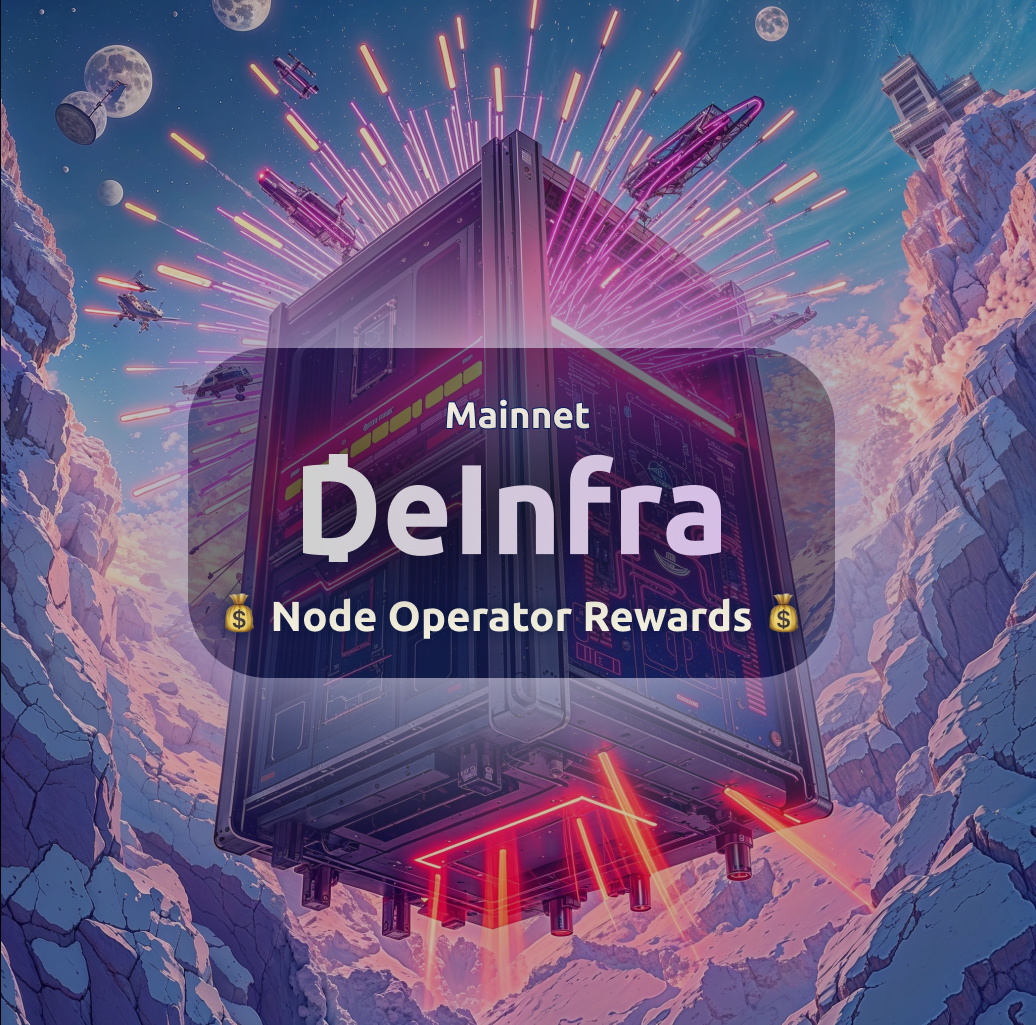How Do DeInfra Node Operators Earn? Full Breakdown of Staking Rewards and Commissions
As DeInfra Mainnet launches, becoming a node operator is not just about supporting the network — it’s an opportunity to earn passive income in a fully decentralized Proof-of-Stake (PoS) ecosystem.
DeInfra’s staking-based NFT node model ensures that rewards are transparent, automated, and fairly distributed. Whether you’re a validator, a node operator, or a participant in the network, understanding how staking rewards and commissions work is essential to maximizing your earnings.
🔹 What Are DeInfra Nodes?
In DeInfra, nodes serve as the backbone of the decentralized infrastructure, handling transaction validation, consensus, and overall network stability.
Unlike traditional staking models, DeInfra introduces NFT-staked nodes, where each node is issued as a pre-staked NFT containing 25,000 $SK. This simplifies onboarding and ensures that only committed participants operate nodes in the network.
💡 Why NFT Nodes?
- Instant Activation — No need to manually stake tokens.
- Automated Rewards — Nodes automatically receive rewards based on network activity.
- Security & Decentralization — Staked nodes prevent malicious actors from disrupting the network.
🔹 How Do Node Operators Earn?
Node operators in DeInfra earn from two primary sources, ensuring a stable and predictable income stream.
1. Transaction Fees
Every transaction processed within the network incurs a small fee, which is distributed among active nodes.
💰 How it works:
- Users pay transaction fees in $SK when interacting with the network.
- A portion of these fees is allocated to active node operators.
- The more transactions the network processes, the higher the fee earnings for operators.
Transaction fees are paid out automatically through smart contracts, ensuring fairness and transparency.
2. Staking Rewards (Epoch-Based Payments)
DeInfra operates on an epoch-based staking model, meaning rewards are distributed periodically based on the network’s activity.
💰 How it works:
- Node operators receive a share of the staking rewards pool.
- The amount earned depends on the number of active nodes and total network participation.
- Rewards are automatically calculated and distributed at the end of each epoch.
The more stable and reliable your node, the more rewards you accumulate over time.
🔹 How Are Rewards Distributed?
To ensure fair and automated payouts, DeInfra relies on its smart contract-based PoS system, which consists of:
- ChainFee Contract — Collects transaction fees and distributes them among nodes.
- ChainState Contract — Tracks node status and eligibility for rewards.
- ChainManagement Contract — Updates the list of active and inactive nodes every epoch.
- ChainNodes Staking Contract — Ensures all NFT nodes maintain their staked value.
🔹 Payouts occur automatically, removing the need for manual claims or intermediary processes.
🔹 How to Maximize Your Earnings as a Node Operator?
💡 Tips to increase your earnings in DeInfra:
- Maintain 99%+ uptime — Ensuring your node is always online prevents missed rewards.
- Stay updated with network upgrades — Participating in governance and network improvements may lead to additional benefits.
- Hold and operate multiple nodes — The more NFT nodes you own, the higher your staking returns.
- Engage in Compute Nodes (coming soon) — Providing additional GPU & AI-based computing power will open up new revenue streams.
🔹 Final Thoughts: A Profitable Future for Node Operators
DeInfra offers one of the most rewarding PoS systems in Web3, thanks to its staking-based NFT nodes, automated reward system, and transparent fee distribution.
🌟 Key Takeaways:
- Earn transaction fees and staking rewards as a node operator.
- NFT nodes ensure stable, long-term earnings with built-in staking.
- Automated smart contract payouts make earning effortless.
📢 Want to become a DeInfra node operator?
This is just the beginning.






























